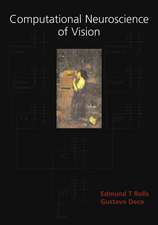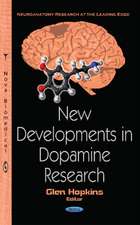Calcium and Ion Channel Modulation
Editat de A. D. Grinnellen Limba Engleză Paperback – 17 sep 2011
Preț: 401.61 lei
Nou
Puncte Express: 602
Preț estimativ în valută:
76.86€ • 83.46$ • 64.56£
76.86€ • 83.46$ • 64.56£
Carte tipărită la comandă
Livrare economică 23 aprilie-07 mai
Preluare comenzi: 021 569.72.76
Specificații
ISBN-13: 9781461282730
ISBN-10: 146128273X
Pagini: 464
Ilustrații: XXII, 436 p.
Dimensiuni: 170 x 244 x 24 mm
Greutate: 0.74 kg
Ediția:Softcover reprint of the original 1st ed. 1988
Editura: Springer Us
Colecția Springer
Locul publicării:New York, NY, United States
ISBN-10: 146128273X
Pagini: 464
Ilustrații: XXII, 436 p.
Dimensiuni: 170 x 244 x 24 mm
Greutate: 0.74 kg
Ediția:Softcover reprint of the original 1st ed. 1988
Editura: Springer Us
Colecția Springer
Locul publicării:New York, NY, United States
Public țintă
ResearchCuprins
I. Voltage-Activated Calcium Channels.- Calcium Channel Diversity.- Multiple Types of Calcium Channels: Is their Function Related to Their Localization?.- Calcium Channels Incorporated Into Planar Lipid Bilayers: Phenomenology, Pharmacology, and Phylogeny.- Modulation of Ionic Selectivity of Ca Channels in the Neuronal Membrane by Ca2+ Ions..- Proton-Induced Transformation of Ca2+ Channel in Dorsal Root Ganglion Neurons..- Physiology of Multiple Calcium Channels..- Expression of Presynaptic Calcium Channels in Xenopus Oocytes..- II. Intracellular Calcium and Cell Function: Sensory Transduction, Modulation of Excitability and Neurosecretion.- Control of Light Emitting Photoprotein by Calcium Channels in a Hydrozoan Coelenterate.- Calcium in Photoreceptors..- Small Conductance Ca2+ Activated K Channels in Mollusks..- Ca2+ Diffusion in the Cytoplasm of Aplysia Neurons: Its Relationship to Local Concentration Changes..- Fura-2 Imaging of Localized Calcium Accumulation Within Squid ‘Giant’ Presynaptic Terminal.- Toward a Molecular Understanding of Synaptic Transmitter Release: Physiological Clues from the Squid Giant Synapse..- Quantal Classes and Subunits of Quanta in the Neuromuscular Junction.- III. Ion Channel Modulation by Neurotransmitters and Second Messengers.- Cytoplasmic Modulation of Ion Channel Functioning in the Neuronal Membrane..- Control of the Generation and Removal of Calcium-Mediated Inactivation of the Calcium Current in Helix aspersa Neurons..- The Role of Protein Phosphorylation in the Response of Dihydropyridine-Sensitive Calcium Channels to Membrane Depolarization in Mammalian Pituitary Tumor Cells..- Modulation of the Potassium Conductance in the Squid Giant Axon..- Physiological Interaction Between Calcium and Cyclip AMP in an Aplysia BurstingPacemaker Neuron..- Functional Implications of Calcium Channel Modulation in Embryonic Dorsal Root Ganglion Neurons..- Neurotransmitter Modulation of Calcium Currents in Rat Sensory Neurons..- Modulation of Potassium and Calcium Currents by FMRFamide in Aplysia Neurons: A Mechanism of Presynaptic Inhibition.- Cytoplasmic Modulation of Transmitter Gated K Channels in Cultured Mammalian Central Neurons.- IV. Ion Channels as Causes and Consequences of Development.- Regulation of Cortical Vesicle Exocytosis in Sea Urchin Eggs..- Studies on the Development of Voltage-Activated Calcium Channels in Vertebrate Neurons..- Generation of Neuronal Architecture: Ionic Regulation of Growth Cone Behavior..- Target Cell Contact Modulates Spontaneous Quantal and Non-quantal Acetylcholine Release by Xenopus Spinal Neurons.- Development and Regulation of Acetylcholine Receptor Function.- Steroidal Regulation of mRNA Coding for Potassium Channels in Uterine Smooth Muscle..- V. New Approaches to Ion Channel Function and Regulation.- Fast Patch-Pipette Internal Perfusion with Minimum Solution Flow.- Evidence for a Bicarbonate Conductance in Neuroglia.- Divalent Cations as Modulators of NMDA-Receptor Channels on Mouse Central Neurons..- Fluorescence Imaging Applied to the Measurement of Ca2+ in Mammalian Neurons..- Use of Fused Synaptosomes or Synaptic Vesicles to Study Ion Channels Involved in Neurotransmission..- Ion Channels of Three Microbes: Paramecium, Yeast and Escherichia coli.
















